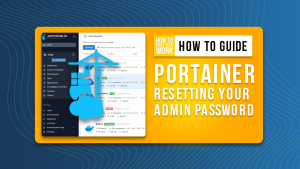The next iteration of AlmaLinux is on the horizon, and although it doesn’t bring any drastic changes, Jack Wallen believes it offers enough to make everyone want to upgrade.

AlmaLinux is a Linux distribution that is 1:1 binary compatible with Red Hat Enterprise Linux. That means it’s perfectly at home as an enterprise server operating system capable of handling anything you can throw at it. This server-centric operating system was first released in 2021 as a drop-in replacement for CentOS and would serve as an alternative to RHEL.
Since its inception, AlmaLinux has risen to become one of the most popular options for those who want the power, security and reliability of RHEL, but don’t want to pay the price. Although not my go-to Linux server of choice (that title belongs to Ubuntu Server), AlmaLinux is the distribution I turn to when Ubuntu Server isn’t an option (such as when a deployment requires the higher level of security offered with SELinux).
With RHEL 9 releasing in May, it should come as no surprise that AlmaLinux 9 will follow in its footsteps. Although there is no official release date for the next iteration of AlmaLinux, what we do know is that the beta has finally arrived and although it’s not a major departure from what was offered in AlmaLinux 8, there’s certainly enough to garner a bit of excitement about this next release.
Let’s find out what’s coming to this outstanding Linux distribution.
SEE: 40+ open source and Linux terms you need to know (TechRepublic Premium)
It starts with the kernel
AlmaLinux 9 is based on the upstream kernel version 5.14, which adds more support for newer hardware and a hot-unplug feature for Radeon cards. Other improvements to the 5.14 kernel include:
- Core scheduling
- A new I/O priority controller
- Secret memory areas
- Journaling improvements for the default ext4 file system.
- Low latency USB driver
SELinux gets serious performance improvements
One thing that has been an issue with any Linux distribution that makes use of SELinux is that with the security layer enabled, there’s always a bit of a performance hit to be had. According to Red Hat, the improvements to SELinux that are found in the upcoming release result in:
- A reduced time to load SELinux policies into the kernel (from ~1.3 seconds to only ~106 milliseconds).
- A reduced time to rebuild SELinux policies from modules (from ~21.9 seconds to ~5.7 seconds).
- A reduced size of the final SELinux policy binary blog (from 7.6 MB to 3.3 MB).
- A reduced memory overhead (from ~30 MB to ~15 MB).
- A reduced time to create files with SELinux enabled (from ~55 microseconds to ~44 microseconds).
- More optimal sizing of internal hash tables.
- Faster lookup of role transitions.
- Faster filename transitions.
- Faster hash table operations.
Anyone hoping for a faster AlmaLinux experience should be pretty stoked about what’s coming.
New packages
As with any new release, a number of the pre-installed and available packages have been updated. You’ll find updates such as Perl 5.32, PHP 8.0, Git 2.31, Apache HTTP Server 2.4, Varnish Cache 6.5, Squid 5.2, MySQL 8.0, Redis 6.2, GCC 11.2, glibc 2.34, binutils 2.35, Go Toolset 1.17.7, GDB 10.2, Valgrind 3.18.1, SystemTap 4.6, Dyninst 11.0.0, elfutils 0.186, Maven 3.6 and Ant 1.10.
Miscellaneous improvements
There are plenty of other improvements to be found in AlmaLinux 9, such as enhanced web console performance metrics, kernel live patching via the web console, streamlined image building, smart card authentication (via web console), additional security profiles, detailed SSSD logging, integrated OpenSSL 3 and SSH root password login disabled by default.
Conclusion
AlmaLinux 9 might not offer new deal-making or breaking features, but the added hardware support found in the latest mainstream kernel and the performance enhancements to SELinux alone should have most admins excited about this new release.
For those who want to kick the tires of AlmaLinux 9 beta, download an ISO copy and spin it up.
Subscribe to TechRepublic’s How To Make Tech Work on YouTube for all the latest tech advice for business pros from Jack Wallen.
Source of Article



